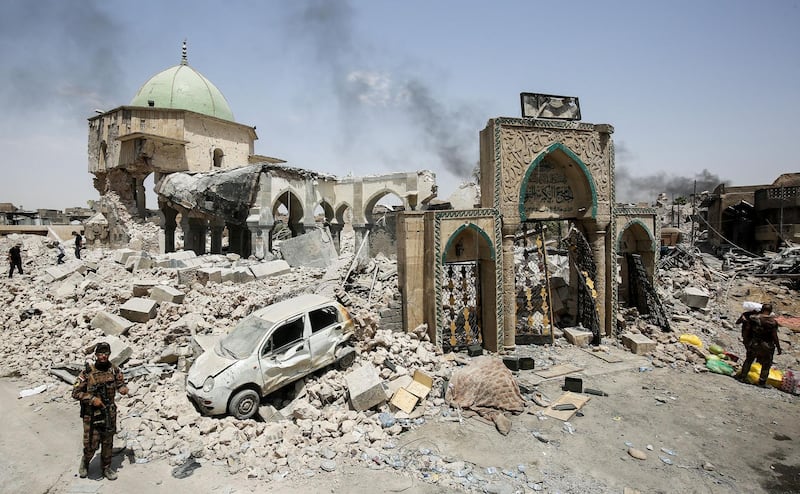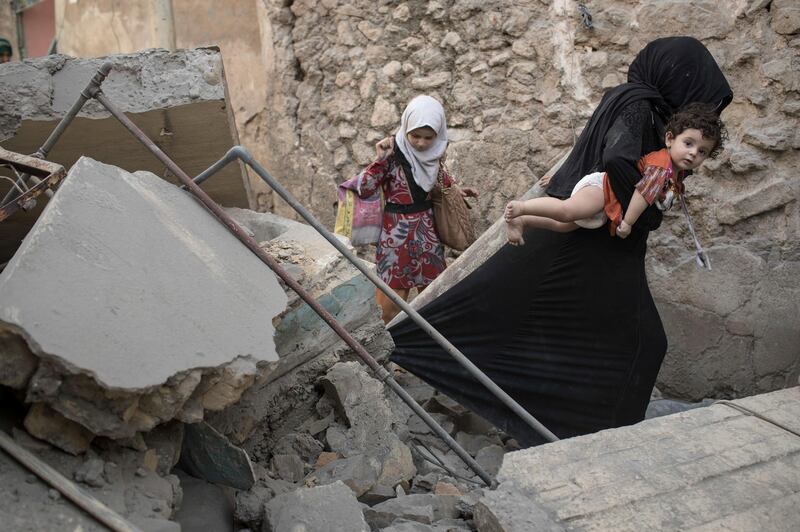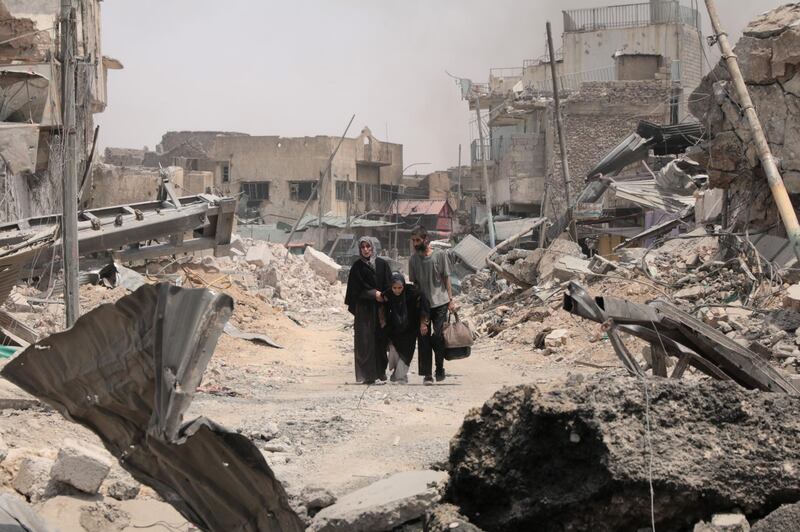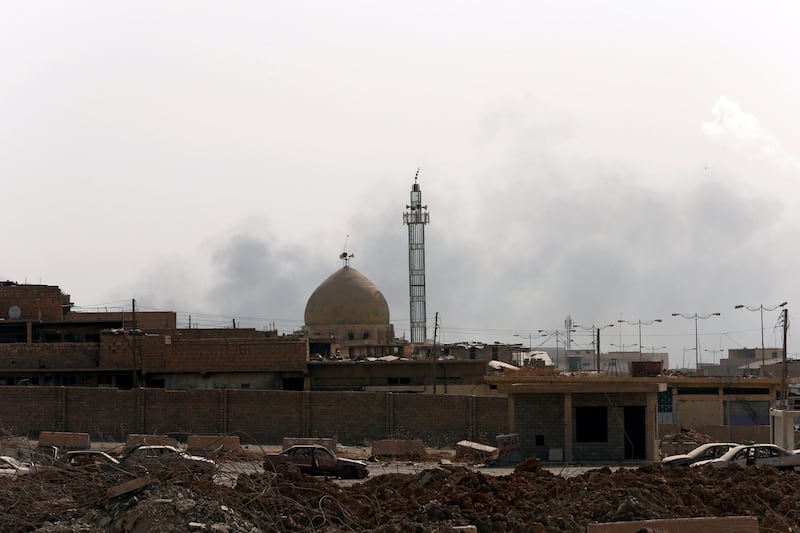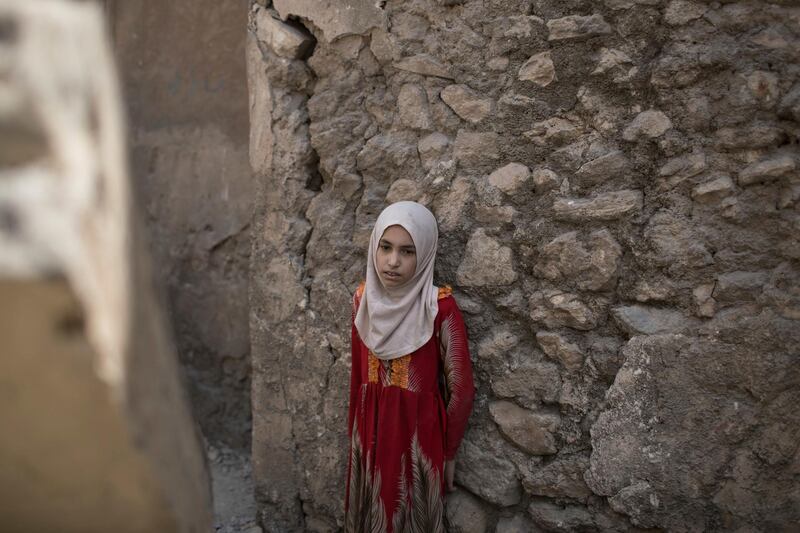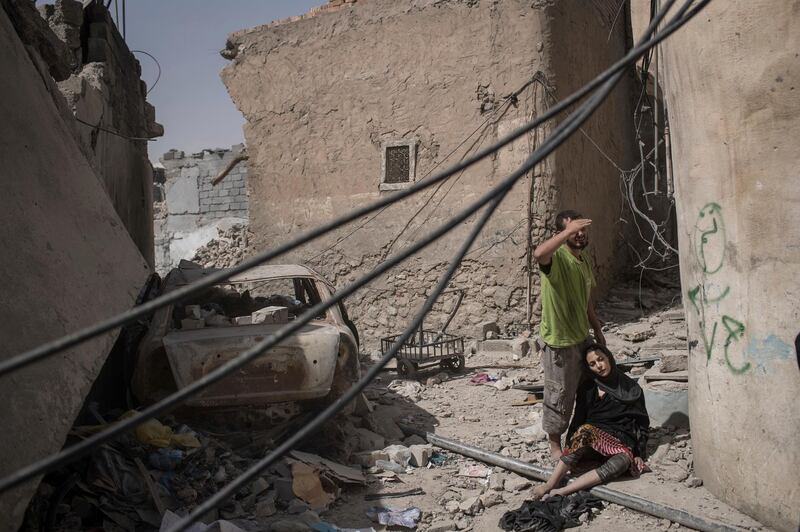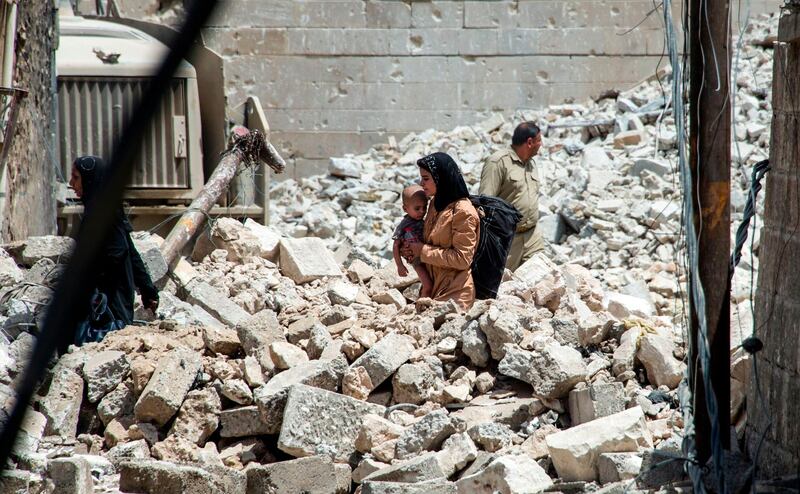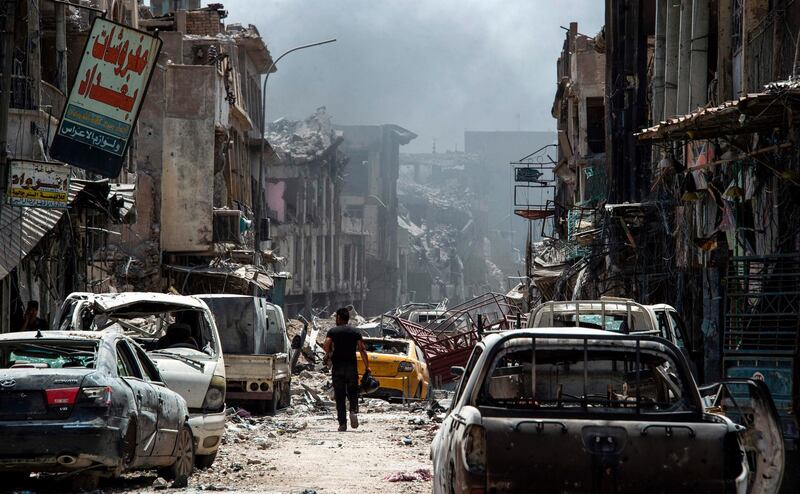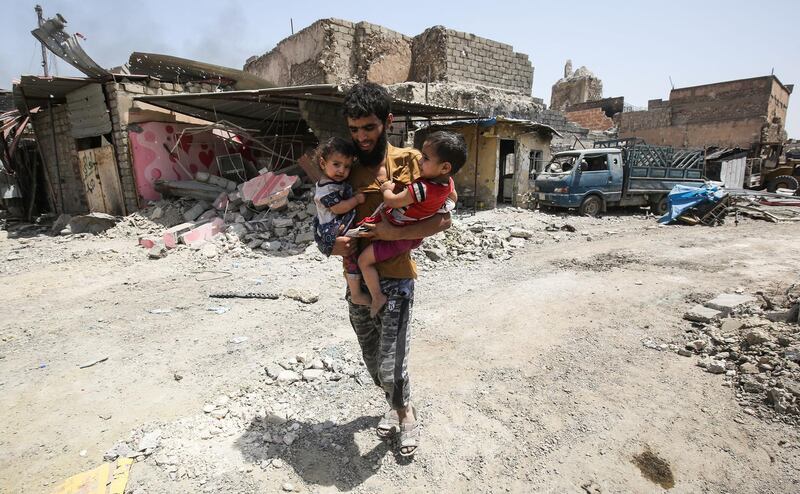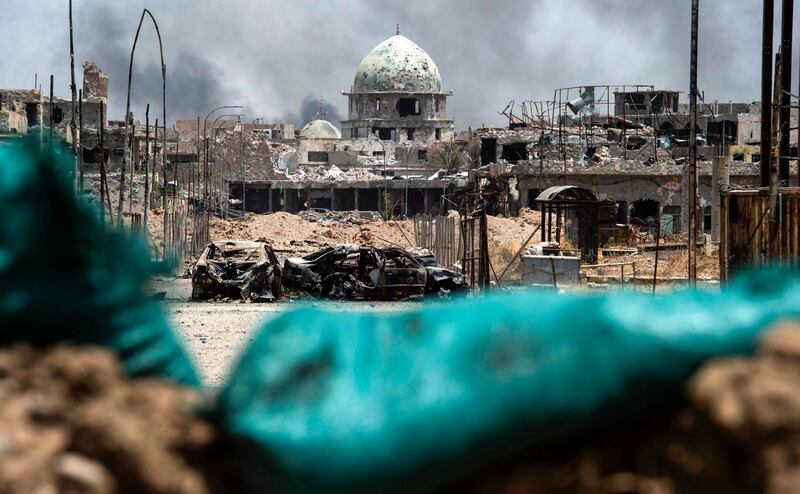Iraq began rebuilding Mosul’s Al Nuri Mosque on Sunday, laying the cornerstone of a UAE-funded project to restore the national treasure destroyed by ISIS last year.
The twelfth century mosque and its famous leaning minaret – nicknamed Al Hadba or “the hunchback”– adorns Iraq’s 10,000 dinar note. It gained international notoriety in 2014 as the location where Abu Bakr Al Baghdadi declared his ISIS “caliphate”.
By anointing himself so-called caliph in the mosque – his only public appearance as the leader of ISIS – Al Baghdadi sealed the building's fate.
In June 2017, as Iraqi security forces advanced to within 50 metres of the mosque in the closing days of the battle for Mosul, ISIS destroyed it. Reluctant to suffer a symbolic defeat by withdrawing, ISIS fighters demolished the building with explosives and attempted to blame the destruction on coalition air strikes.

On Sunday, dozens of government officials, religious leaders, UN representatives and European ambassadors gathered amid the cleared rubble in front of the ruined mosque to watch the new foundation being laid.
Abdullatif Al Humaym, the head of Sunni Muslim endowments in Iraq, laid a stone with the following inscription: "This cornerstone for the rebuilding and restoration of Al Hadba minaret and the Great Al Nuri Mosque was laid on December 16, 2018."
In the year since ISIS was defeated in the city, the mosque has been left largely as it was when fighting stopped.
A chain-link fence to keep out looters was built around the site, which is still largely rubble. A turquoise cupola and an inscribed entrance arch are all that is left standing of the 800-year-old mosque, both daubed with graffiti cursing ISIS. All that remains of the leaning minaret is its rectangular base.

Abu Bakr Kenaan, head of Sunni Muslim endowments in Nineveh province, told AFP that remnants of the minaret would be preserved, while other parts of the mosque would be built from scratch, along with a museum about its history and adjacent homes.
The UAE pledged $50.4 million (Dh185m) to rebuild the mosque, in a restoration project expected to take five years.
The mosque's destruction "was a moment of horror and despair," said Unesco Iraq representative Louise Haxthausen.
"Today as we lay the foundation stone of the Nuri mosque, we are starting a journey of physical reconstruction," she told those gathered.
___________________
Read more:
UAE rebuilding of Mosul mosque 'defeats extremism'
UAE launches greatest cultural restoration project in Iraq to revive Al Nuri mosque
UAE funds rebuilding of Mosul’s Al Nuri Mosque and historic minaret
___________________
The mosque takes its name from Nureddin Al Zinki, who ordered it to be built in 1172 after battling Crusaders and Shiite Fatimids.
Its cylindrical minaret, which featured several levels of ornamental brickwork capped by a small white dome, started listing centuries ago.
Renovations to the minaret during the 1930s were overseen by a renowned local Christian stonemason.
Local lore holds that he declined payment for his work, saying instead: “I will get my wage from the owner of this home,” referring to God.


